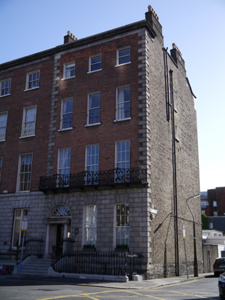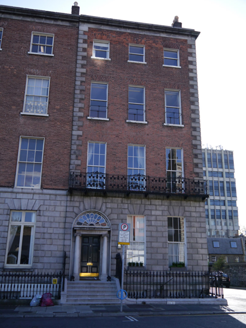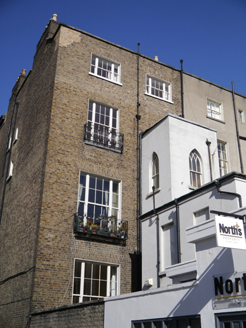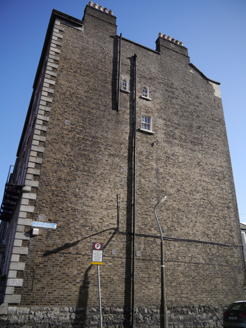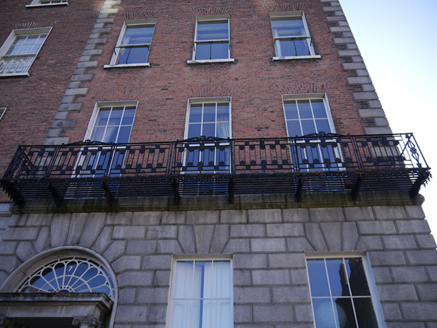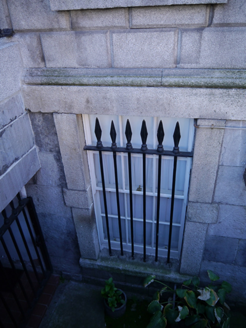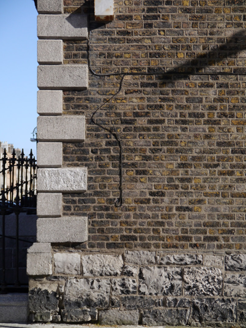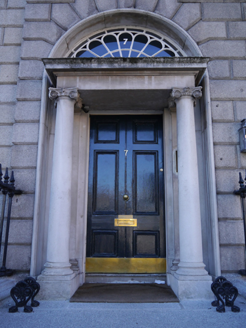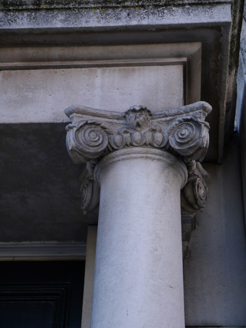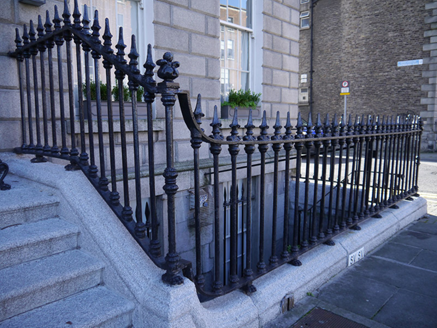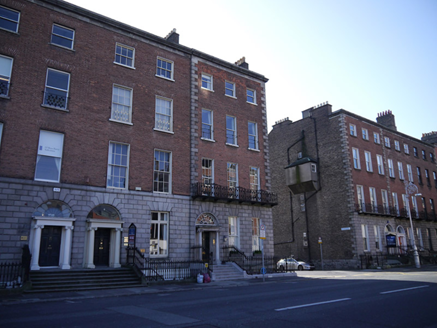Survey Data
Reg No
50930135
Rating
Regional
Categories of Special Interest
Architectural, Artistic
Original Use
House
In Use As
Apartment/flat (converted)
Date
1815 - 1835
Coordinates
316523, 232925
Date Recorded
16/09/2015
Date Updated
--/--/--
Description
End-of-terrace three-bay four-storey townhouse over basement, built c. 1825, as a group comprising Nos. 5-7 (50930133-5). Two-stage return to rear (east) and two-bay four storey over basement south elevation fronting onto Cumberland Road. M-profiled slate roof, hipped to south, concealed by ashlar granite parapet with moulded cornice and coping to north-west, plain granite coping to south and east. Shouldered brick chimneystacks to south and north party wall with octagonal yellow clay pots. Parapet gutters and cast-iron hoppers and downpipes to south and east elevations. Red brick walling laid in Flemish bond to principal (west) elevation, with rusticated granite quoins, rusticated ashlar granite walling to ground floor over coursed limestone walling to basement having granite plinth course. Buff brick walls laid to English garden wall bond to south and east elevations, over quarry-faced random limestone plinth to south. Ruled-and-lined rendered walls to east return. Largely square-headed window openings with brick voussoirs and granite sills, granite surround to basement openings with steel grille affixed. Largely replacement six-over-six sliding timber sashes with ogee horns, possibly original to basement, one-over-one to upper floors of west elevation. Pair of diminutive round-headed openings to second floor of south elevation with multi-paned timber sashes, over diminutive three-over-three sash. Iron guard rails to second floor west and cast-iron balconettes to first floor, continuous to west. Number of Wyatt-style windows to east elevation. Pointed arch window openings to third floor of return, having plain surrounds and three-over-three timber sashes with horns and timber-traceried heads. Number of blocked-up window openings to rear return. Round-headed door opening to principal elevation (west) with moulded reveals and distyle Ionic doorcase comprising Scamozzian-Ionic columns with engaged Doric pilasters, supporting projecting frieze and cornice surmounted by decorative petal fanlight over six-panelled timber door with beaded-muntin. Granite entrance platform with cast-iron boot scrapers, approached by six nosed granite steps, flanked by cast-iron railings with decorative finials and corner posts over carved granite plinth, enclosing basement well to south. Steel steps to basement well. Coal-hole cover to pavement. Single-storey recent building to former rear plot and two-storey recent mews on Lad Lane.
Appraisal
Forming part of a similarly detailed group (Nos. 5-7), the terrace retains fine neo-classical doorcases and porticos, rusticated granite walling to ground floor, and decorative iron railings. This detailing is repeated on the southern side of Cumberland Road, with Nos 7 and 8, with their rusticated granite quoins framing the street. Developed in conjunction with the east and south sides of Fitzwilliam Square, the eastern side of Fitzwilliam Place was completed by 1836, with the exception of five houses to the south-end. Built in pairs or groups, the designs emulated those of Fitzwilliam Square South, but Casey (2005) notes that the interior ornament of Fitzwilliam Place is generally more varied and richer, particularly the internal stair halls.

